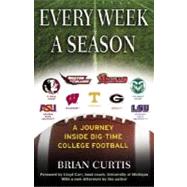
What is included with this book?
| Foreword | p. ix |
| Acknowledgments | p. xiii |
| Introduction | p. 3 |
| After Sonny-Colorado State University | p. 11 |
| Faith in the Game-The University of Georgia | p. 38 |
| Guard on the Watchtower-Boston College | p. 61 |
| Tennessee, Inc.-The University of Tennessee | p. 82 |
| Breakfast with the Fridge-The University of Maryland | p. 109 |
| I'm In, I'm On-The University of Wisconsin | p. 132 |
| Focused on the Future-Louisiana State University | p. 158 |
| The Governor-Florida State University | p. 182 |
| Redemption-Arizona State University | p. 209 |
| SEC Championship Game-Second Chances | p. 231 |
| BCS National Championship Game/Nokia | |
| Sugar Bowl-Eliminating the Clutter | p. 245 |
| Epilogue | p. 273 |
| Afterword | p. 285 |
| Table of Contents provided by Ingram. All Rights Reserved. |
The New copy of this book will include any supplemental materials advertised. Please check the title of the book to determine if it should include any access cards, study guides, lab manuals, CDs, etc.
The Used, Rental and eBook copies of this book are not guaranteed to include any supplemental materials. Typically, only the book itself is included. This is true even if the title states it includes any access cards, study guides, lab manuals, CDs, etc.
Excerpted from Every Week a Season: A Journey Inside Big-Time College Football by Brian Curtis
All rights reserved by the original copyright owners. Excerpts are provided for display purposes only and may not be reproduced, reprinted or distributed without the written permission of the publisher.